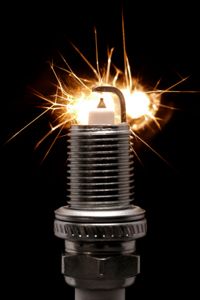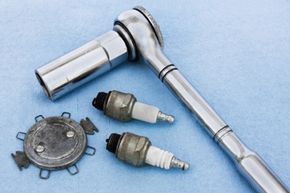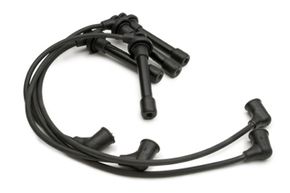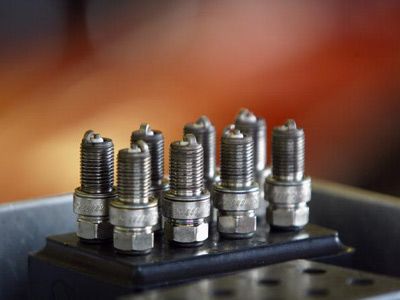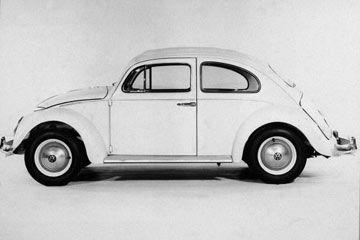Spark plugs are instrumental in making a gasoline engine run. They shoot out a spark of electricity into the compressed mixture of air and gasoline within an engine's cylinders. This ignites the mixture and forces the cylinder's piston down. The motion of the piston is what creates power.
Spark plugs also have another job -- they pull heat away from the combustion chamber. That means spark plugs can get very hot. In general, cars have a spark plug for every cylinder in the engine. For instance, a four-cylinder engine will have four spark plugs. However, there are exceptions to the rule -- a vehicle with a HEMI engine will have two spark plugs per cylinder.
Advertisement
Spark plugs wear out over time. As they get older, they may not spark properly. This affects your engine's performance and results in a loss of power. But replacing your spark plugs isn't like other car repair projects -- it's much more straightforward and only requires a few tools. You don't need to be a skilled auto mechanic to change your car's spark plugs. In most cases, you can switch out an old set for new plugs in about an hour.
Before changing your spark plugs, you should consult your vehicle's owner's manual. You're looking for two things: how often you should change your spark plugs and where the spark plugs are located on your engine. For most vehicles, the rule of thumb is to replace your spark plugs every 30,000 miles (48,280 kilometers).
You should also make sure the engine is cold before you start -- spark plugs can get very hot! Even after other parts of your engine have cooled down, the spark plugs may still be too warm to touch. Let your engine cool down for a couple of hours before you begin.
Advertisement
